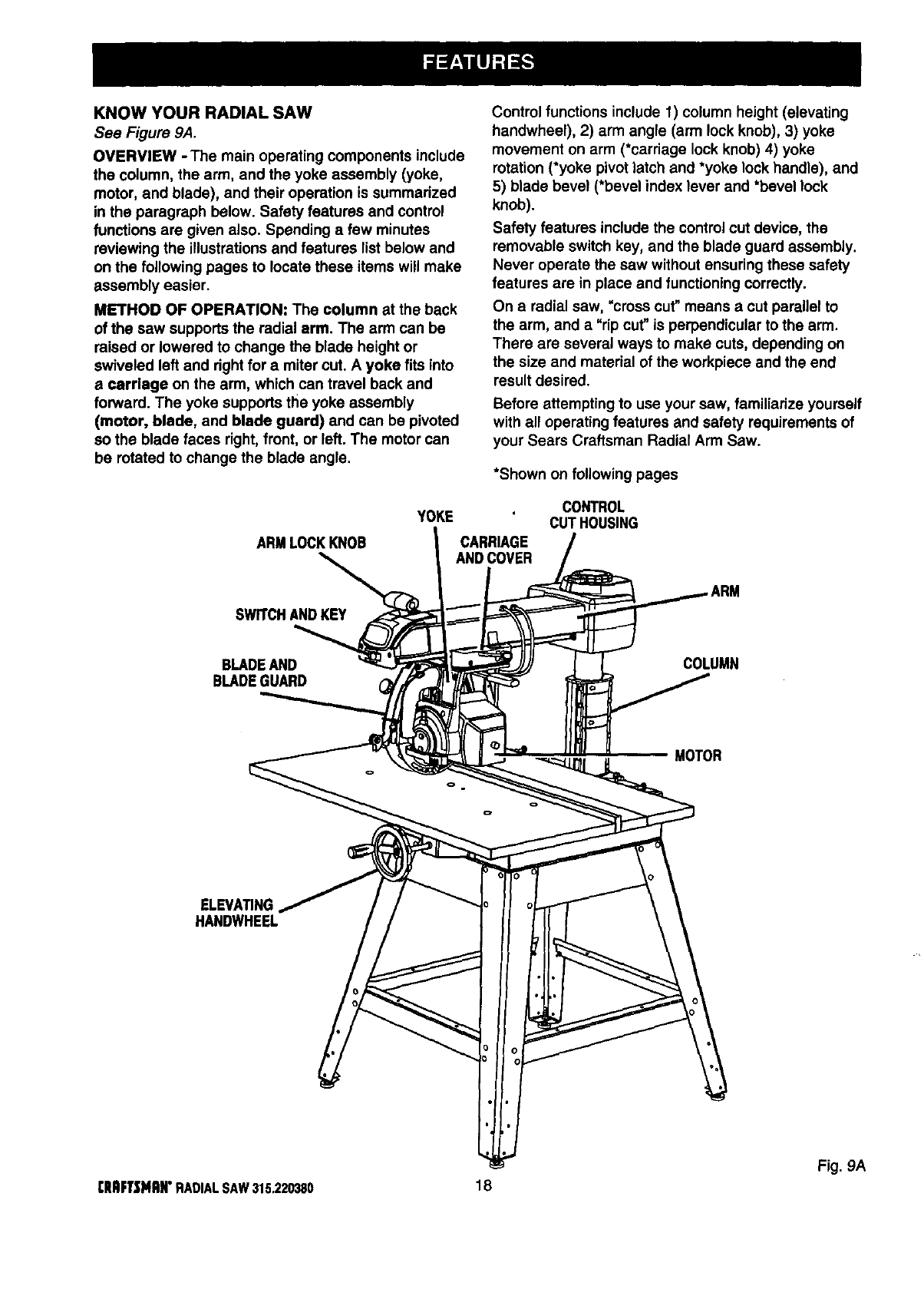
KNOW YOUR RADIAL SAW
See Figure 9A.
OVERVIEW -The main operating components include
the column, the arm, and the yoke assembly (yoke,
motor, and blade), and their operation is summarized
in the paragraph below. Safety features and control
functions are given also. Spending a few minutes
reviewing the illustrations and features list below and
on the following pages to locate these items will make
assembly easier.
METHOD OF OPERATION: The column at the back
of the saw supports the radial arm. The arm can be
raised or lowered to change the blade height or
swiveled left and dght for a miter cut. A yoke fits into
a carriage on the arm, which can travel back and
forward. The yoke supports the yoke assembly
(motor, blade, and blade guard) and can be pivoted
so the blade faces right, front, or left. The motor can
be rotated to change the blade angle.
Control functions include 1) column height (elevating
handwheel), 2) arm angle (arm lock knob), 3) yoke
movement on arm (*carriage lock knob) 4) yoke
rotation (*yoke pivotlatch and *yoke lock handle), and
5) blade bevel (*bevel index lever and *bevel lock
knob).
Safety features include the controlcut device, the
removable switch key, and the blade guard assembly.
Never operate the saw without ensuring these safety
features are in place and functioning correctly.
On a radial saw, "cross cut" means a cut parallel to
the arm, and a "rip cut" is perpendicular to the arm.
There are several ways to make cuts, depending on
the size and material of the workpiece and the end
result desired.
Before attempting to use your saw, familiadze yourself
with all operating features and safety requirements of
your Sears Craftsman Radial Arm Saw.
*Shown on following pages
ARMLOCKKNOB
YOKE
CARRIAGE
ANDCOVER
CONTROL
CUTHOUSlNG
SWITCHANDKEV
BLADEAND
BLADEGUARD
COLUMN
MOTOR
ELEVATING
HANDWHEEL
Fig. 9A
[RRFTSNRN'RADIALSAW315.220380 18


















